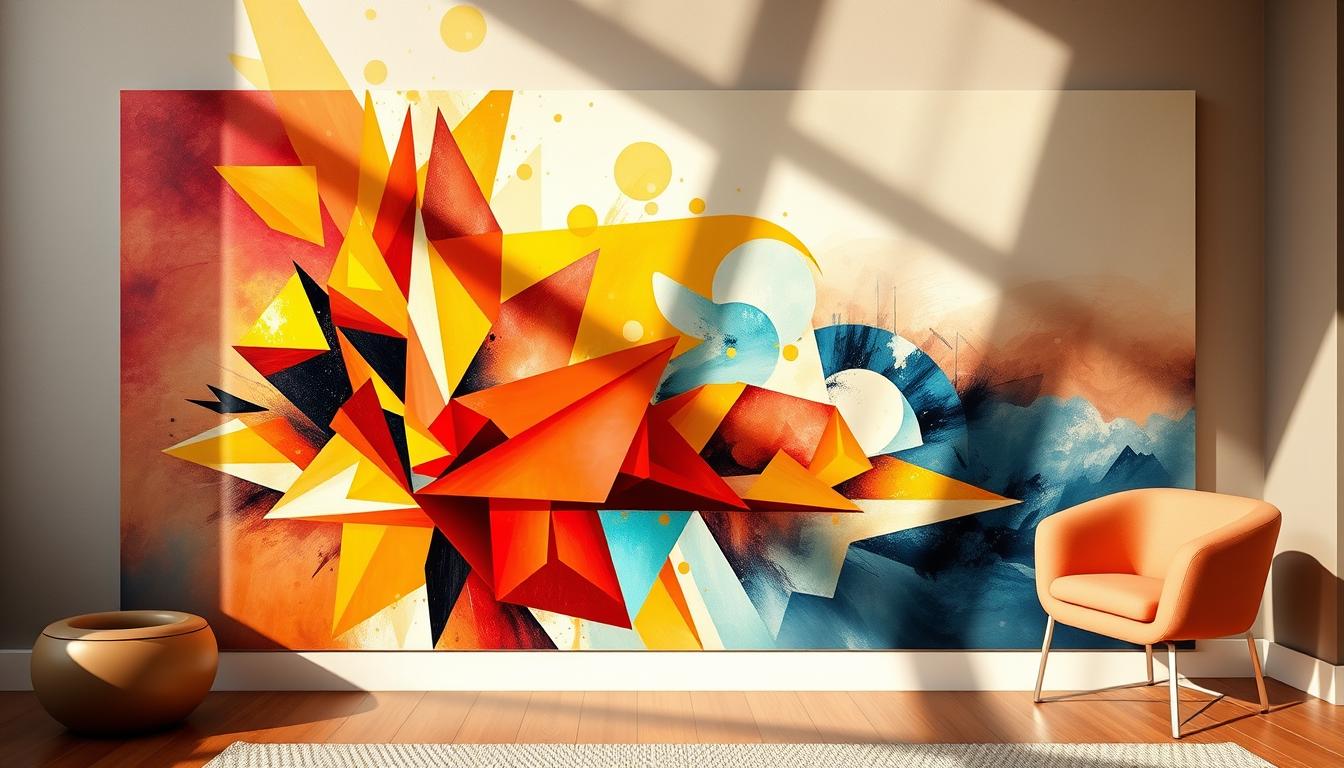Curious about which creative roles truly lead to big earnings? What is the highest paid job in art? This guide cuts through buzz and shows which roles pay well now across the U.S. media and creative industry.
Art directors top many lists, with a median salary near $94,220 and top earners well past $188,000. Producers and directors earn solid medians and show healthy projected growth for the next decade.
Video editors and curators are among fast-growing roles, while some graphic and interior design paths show slower movement but still offer steady salary options. We’ll clarify median versus top-end pay so you can weigh steady income against standout outcomes.

This article ranks roles by salary, growth, and real-world demand. Expect clear profiles of day-to-day work, required skills, and routes to build a strong career. Read on to find the paths that match your strengths and goals.
Key Takeaways
- Top roles mix art and strategy: leadership positions often pay most.
- Median vs top-end: median shows steady income; top-end shows exceptional potential.
- Growth centers: video and streaming roles are expanding fast.
- Industry matters: advertising, film, and museums shape pay and advancement.
- Skills that help: deep portfolios, software fluency, and strong collaboration skills.
What “highest paid” means in art careers today (United States, present)
Defining top earnings in creative fields means balancing median pay with exceptional top-tier payouts and long-term stability. A clear view blends central salary figures, top-10% outcomes, and how steady income stays across roles.
Medians vary widely: art directors near $94,220 (top 10% $188,000+), producers and directors about $74,420 with roughly 10% growth, and video editors at $63,780 with fast 22% growth. Curators, drafters, graphic and interior design roles show different medians and movement.
Industry matters: the same title pays differently in advertising, film, museums, fashion, or retail. Growth signals more openings and faster promotion, while flat segments demand standout portfolios and niche skills.
Base pay can differ from total compensation; senior creative leaders often earn bonuses tied to project outcomes in media. Experience and responsibilities push many from individual contributor roles into leadership pay brackets.
Freelance rates may exceed salaries for seasoned specialists, though income can be less steady. Use medians and top-tier figures as a guide, then map skills, growth, and geography to pick strong careers.
What is the highest paid job in art?
Leadership and project scale drive top compensation. Visual leaders who manage teams and strategy usually earn the most steady pay. Two roles stand out for both median and upside.
Art Director — median salary $94,220, top earners $188,000+
Art directors oversee visual concepts across magazines, packaging, advertising, and media. They set style frames, lead designers, and keep projects on time and on budget.
Most employers want at least five years of experience building a portfolio in agencies, studios, or in-house teams. That runway helps candidates reach top salaries and bigger client accounts.
Producer & Director — median salary $74,420, strong growth outlook
Producers handle finance, logistics, and schedules. Directors focus on creative vision, casting, and on-set decisions for film, television, streaming, and branded media.
These roles benefit from ongoing content growth and can exceed $173,680 for top credits. Compensation often links to project scale and market success.
| Role | Median | Top 10% | Typical experience | Common settings |
|---|---|---|---|---|
| Art Director | $94,220 | $188,000+ | 5+ years portfolio | Agencies, brands, studios |
| Producer / Director | $74,420 | $173,680+ | Credits + assistant roles | Film, television, digital media |
- Skill focus: communication, leadership, and fast decision-making.
- Internships and assistant roles speed advancement.
- Strong portfolios and credits unlock interviews and higher salaries.
Top-paying art jobs to consider right now
Streaming platforms and short-form channels have opened new, well-paid pathways for creative editors and motion specialists. Below are practical profiles and median figures to compare roles and skills that pay.
Video Editor — median salary $63,780
Why it pays: Rapid 22% growth from streaming and online platforms fuels demand. Editors who use Adobe Premiere Pro, Avid, or DaVinci Resolve stand out.
Tip: Collaborate with motion designers to add animated graphics for trailers and social clips.
Graphic Designer — median salary $52,110
Digital and motion graphics now drive more work than print. Designers who build brand systems for web, social, and product packaging keep stronger pipelines.
Art Curator — median salary $54,570
Curators handle acquisition, research, preservation, and exhibition design. Museum studies and gallery experience boost hiring prospects and growth.
Interior Designer — median salary $56,040
High-wealth areas offer the best opportunities. Designers often partner with architects and contractors to meet tight timelines and high standards.
Drafter (CAD) — median salary $56,830
Top earners pass $87,000 with specialized Autodesk AutoCAD, Revit, or SolidWorks skills. Drafters translate product and architectural ideas into technical drawings.
Multimedia Artist & Animator
These creatives support film, television, games, and advertising using Maya, Blender, After Effects, and real-time engines. Cross-discipline work multiplies chances for higher pay.
| Role | Median | Growth / Notes |
|---|---|---|
| Video Editor | $63,780 | 22% growth; streaming & short-form demand |
| Graphic Designer | $52,110 | Shift to digital & motion; brand systems |
| Art Curator | $54,570 | 13% growth; museums & cultural institutions |
| Interior Designer | $56,040 | Best in high-wealth markets; contractor collaboration |
| Drafter (CAD) | $56,830 | Top 10% $87k+; Revit/AutoCAD specialization |
Practical advice: Build a portfolio with shipped projects, learn role-specific software, and sharpen client communication. Continuous learning of new plug-ins, codecs, and render workflows keeps candidates competitive.
For more on career pathways after an art degree, see this art school career guide.
Emerging and adjacent high-earning roles in design and media
Many high-value careers now bridge creative vision and practical delivery. These roles reward leaders who balance hands-on craft with team management and vendor coordination. A relevant degree helps entry, but portfolio breadth and leadership often set long-term ceilings.

Creative Director — senior leadership for brand campaigns
Creative directors run concept platforms, integrated advertising, and omnichannel storytelling. They guide large teams, approve creative reviews, and align campaigns across media and product touchpoints.
Industrial Designer — shaping usable, manufacturable product
Industrial designers blend form, function, and manufacturing limits. They work closely with engineers to deliver market-ready product solutions that meet user needs.
Technical Designer (fashion) — fit, specs, and production
Technical designers translate creative intent into tech packs and measurement standards. They lead fit sessions and ensure designs survive production constraints.
Store Planner (retail) — designing behavior-driven spaces
Store planners map consumer journeys, traffic flows, and signage to boost conversion. Layouts are often tied to campaign goals and experiential objectives.
Gallery Manager — exhibition logistics and artist relations
Gallery managers handle calendars, installation logistics, and budgets. They balance artist needs with visitor experience and daily operations.
| Role | Core focus | Value drivers |
|---|---|---|
| Creative Director | Campaign strategy, team leadership | Management, cross-channel storytelling |
| Industrial Designer | Product usability & aesthetics | Engineering collaboration, prototyping |
| Gallery Manager | Exhibitions & artist relations | Logistics, budgeting, visitor experience |
- Skills that pay: people leadership, vendor management, and cross-disciplinary teamwork.
- Animation and video literacy boost impact for advertising and product storytelling.
- Target niches—consumer tech, fashion, retail, or cultural institutions—to compound career momentum.
Salary drivers: industry, experience, and specialization
Where you work and what you master together set pay ranges. Industry context, company scale, and clear proof of results shape how high salaries climb for creative roles.
Industry and employer type
Advertising and media firms often pay premiums for fast-turn, high-visibility creative work. Big brands and well-funded studios raise average salary bands.
Film and television pay scales tie closely to production budgets and credits. Museums provide steadier roles with steady growth for curators and staff.
Experience, portfolio quality, and software proficiency
Shipped projects and leadership on major campaigns compound value. A strong portfolio usually outweighs credentials when hiring.
Mastering Adobe CC, Cinema 4D, Maya, Figma, or Unreal Engine makes candidates more resilient and boosts salary offers.
Specializations that command higher pay
Motion, 3D, UX for product teams, and real-time engines are scarce skills. These specializations often translate to higher salaries and faster growth.
| Driver | Effect on salary | Example | Notes |
|---|---|---|---|
| Industry type | High variance | Ad agency vs. small gallery | Agencies pay premiums for speed and visibility |
| Experience | Higher titles & pay | Shipped campaigns, credits | Leadership multiplies value |
| Specialization | Scarcity premium | Motion, 3D, UX | Top tools raise take-home pay |
| Company size & location | Wide range | Big tech vs. regional studio | Hubs pay more but cost of living rises |
- Network and references speed promotions and improve offers.
- Cross-disciplinary fluency opens versatile, higher-paid careers.
- Ongoing learning keeps salaries aligned with market demand.
Degrees, skills, and software that boost pay
A mix of focused coursework and real-world projects moves candidates toward senior creative pay bands.
Degree routes that help: Many roles start with a bachelor or bachelor degree in design, film, or museum studies. CAD-intensive drafters often follow associate or bachelor pathways, while curators frequently pursue museum studies at the graduate level.
Core skills to develop: Creativity, clear communication, management basics, analytics literacy, and teamwork raise ceilings. Employers also need measurable experience—case studies that show outcomes matter more than paper credentials alone.

Recommended courses and certification
Take advanced CAD courses for drafting, color and typography for designers, and editing or color grading for video roles. Certification in pipeline tools shortens ramp-up time and makes experience more transferable across teams.
"Build case studies that tie craft to results—engagement lifts, conversion gains, or successful exhibitions—to negotiate higher salary."
Tools that matter
Essential software stacks: Adobe Creative Cloud for graphics and motion, Avid for long-form video, CAD platforms for technical drawing, and 3D tools for visualization. Keep software skills current and list them in your resume and portfolio.
| Path | Typical degree | Key software |
|---|---|---|
| Drafter / CAD roles | Associate / bachelor | AutoCAD, Revit, SolidWorks |
| Video & motion | Bachelor (film/design) | Premiere Pro, After Effects, Avid |
| Curators & museum work | Bachelor + master (museum studies) | Collection management systems, catalog tools |
- Portfolio over paper: You also need a strong portfolio that proves outcomes.
- Pair creative electives with business or project management courses to prepare for leadership and higher salary roles.
- For practical pathways and course ideas, explore arts career pathways on Coursera for guided course collections: arts career pathways.
Career paths and real-world work settings
Your choice of setting shapes daily rhythm, pay, and growth. Below we compare common paths so you can match lifestyle and goals.
In-house, agency, self-employed: choosing where to work
In-house roles at companies offer stable pay, benefits, and clear promotion tracks. Teams move slower but provide steady calendars and predictable salary reviews.
Agency environments give creative variety and faster rotation of projects. Agencies also expose people to tight deadlines and higher visibility across media and brand campaigns.
Freelance and self-employed artists gain flexibility and direct access to clients. That freedom can raise income, but it requires clear contracts, solid rates, and tight timeline management to protect margins.
Where different sectors place work
Film and television depend on production cycles and episodic budgets. Video roles often spike around shoots and post windows.
Advertising centers on management, approvals, and fast turnarounds. Product teams and cultural institutions offer steadier schedules, useful for designers and curators building long-term programs.
- Team structures: juniors, leads, and creative management affect approvals and speed to market.
- Clients: client-facing roles reward clear communication, scoping, and expectation setting.
- Networks: referrals and repeat work often matter as much as a portfolio for landing higher offers.
Tip: Rotate between settings over time to build versatility. For broader career data, see this careers in the arts report.
Conclusion
strong, Strategic roles that pair visual skill with people management tend to offer the strongest pay and growth.
By median figures, an Art Director earns about $94,220 while producers and directors average $74,420 with near 10% projected growth. Video editors show rapid 22% expansion, and curators grow around 13%.
Degrees help, but you also need a standout portfolio and case studies that prove results. Focus on software mastery, refine a reel, and target companies whose work matches your ideas and goals.
Choose paths—graphics, animation, product, or curation—that fit your strengths. Build management experience and clear communication skills to move into senior roles and lift salaries over time.
Takeaway: pick a direction, sharpen skills, and show proven outcomes to unlock lasting opportunities and career growth.
Enhance Your Space with Unique Modern Masterpieces
Are you inspired by the innovative mediums and conceptual depth highlighted in our exploration of contemporary art? You’re not alone! Today’s art enthusiasts are seeking cultural relevance and emotional connections in their artwork. However, finding pieces that resonate with modern themes and fit your unique style can be a challenge. That’s where we come in!
At Rossetti Art, we specialize in canvas prints, original paintings, and modern sculptures that celebrate the spirit of now. Each piece created by Chiara Rossetti brings a personal touch that connects deeply with current social narratives—just like the modern masterpieces discussed in the article. Don’t miss out on the chance to elevate your home decor with breathtaking artwork that speaks to your values and aesthetic. Explore our collection today and find your perfect piece! Act now, and transform your space into a gallery of inspiration!
FAQ
Which roles command top salaries within creative industries today?
Senior leadership roles like Creative Director and Art Director often pay the most. These positions lead brand strategy, oversee large teams, and deliver high-impact campaigns for agencies, film studios, or tech firms, pushing compensation into six figures for experienced professionals.
How do Producer and Director earnings compare to design roles?
Producers and Directors in film, TV, and digital media earn competitively, with strong upside for high-profile projects. Median pay sits below top Art Director rates, but commercial success, union contracts, and streaming demand raise potential income substantially.
Which design jobs show rapid growth and strong pay potential?
Video Editors and Multimedia Artists rank high due to streaming and gaming. Video Editor roles show around 22% growth; mastery of editing suites and storytelling can lift pay quickly. 3D and motion skills boost earnings further.
Do gallery and museum positions offer good salaries?
Curators and Gallery Managers provide stable careers and steady pay, especially at major museums and commercial galleries. Growth is steady for museum roles; top institutions offer higher salaries and benefits tied to fundraising and exhibition success.
Can technical and specialized designers earn more than general graphic designers?
Yes. Drafters using CAD, Industrial Designers, and Technical Fashion Designers often earn more by blending technical skill with design. Specialized knowledge, like CAD, UX, or materials science, increases market value and top-end pay.
How much does location affect salary in art and design?
Greatly. High-cost cities such as New York, Los Angeles, and San Francisco pay more due to market demand and client budgets. Remote work widens options, but local market rates and client base still influence compensation.
What education and training boost earning potential?
A bachelor’s or master’s in design, film, or museum studies helps, especially combined with strong portfolios. Degrees paired with industry experience and continued training in software and management strengthen salary prospects.
Which software and technical skills increase pay the most?
Proficiency in industry tools like Adobe Creative Cloud, Final Cut Pro, Avid, Autodesk CAD, and 3D suites (Blender, Maya) is highly valued. UX tools and game engines (Unity, Unreal) also raise earning power in digital fields.
How important is portfolio quality versus formal degree?
Portfolio quality often outweighs degrees in hiring decisions. Employers prioritize demonstrable work, real projects, and software mastery. Degrees provide a foundation, but notable portfolios drive faster pay growth.
Are freelance or agency tracks better for earning more?
Both can lead to high income. Agency and in-house roles offer stability and benefits, while freelancers and consultants can exceed salaried peers through premium project rates, diverse clients, and scalable services.
Which specializations command premium rates in advertising and branding?
Senior Creative Directors, Brand Strategists, and Motion Designers who deliver ROI for campaigns often command premium fees. Clients pay more for specialists who translate creative work into measurable business results.
What career steps help move from mid-level to top-paid roles?
Build leadership experience, manage teams, expand client relationships, and lead major projects. Upskill in analytics, project management, and niche tools. A strong network and consistent portfolio updates accelerate promotion to senior roles.
How does experience level map to salary ranges?
Entry-level designers and artists start near median salaries for their role. Mid-career professionals with 5–10 years and a solid portfolio move into higher pay brackets. Senior leaders and specialists with 10+ years often reach the top earnings.
What industries pay best for art and design talent?
Advertising, film and television, video games, tech, and luxury retail tend to offer the highest compensation. Corporate branding and product design roles in tech companies also provide strong salaries and stock-based incentives.
Which adjacent roles outside traditional art deliver high pay?
UX designers, product designers, industrial designers, and store planners bridge art and business and typically earn well. These positions combine user research, analytics, and design to create measurable product outcomes.






Leave a comment
This site is protected by hCaptcha and the hCaptcha Privacy Policy and Terms of Service apply.